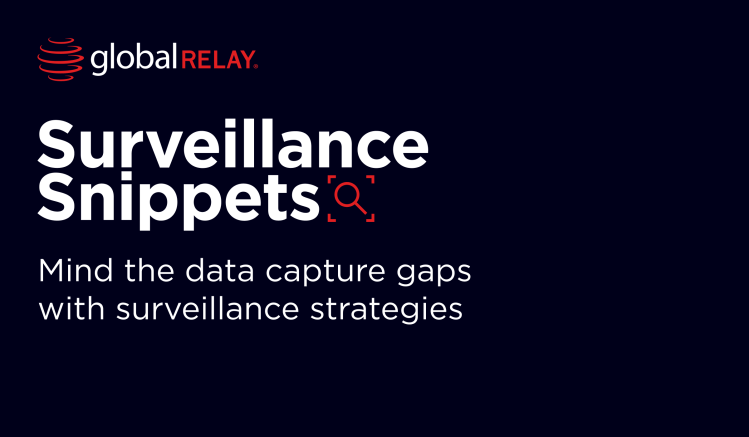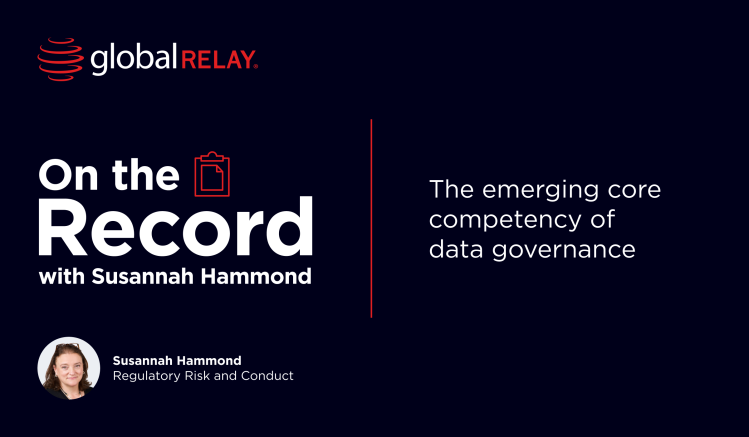When painting, an artist needs to have all the required tools to create and complete the portrait they’re envisioning. Without a collection of paintbrushes, a wide range of paints, and a canvas, there would be no way to produce the desired image. With only some of these tools, accurately depicting the full picture would prove to be difficult.
In the same sense, data completeness is necessary when it comes to surveillance. When firms fail to capture data, whether it be communications or trade data, it becomes difficult to paint a picture for teams to interpret.
To avoid an incomplete picture, firms must sketch out their surveillance strategy, which should include detection of high-risk areas, oversight of channel capture, lexicon or AI-enabled search implementation, and thorough documentation. Utilizing capture solutions that collect and structure all business data across relevant populations within your organization is vital to refining surveillance governance.
Don’t fall short on data completeness
Surveillance is all about data. Firms generate and handle a tremendous amount of data, much of which is sensitive and personal. The sensitivity of financial information makes it a perfect target for bad actors, meaning it’s even more important for teams to keep it stored securely.
Effective archiving is about ensuring you are collecting all the right data, and harnessing it to your firm’s advantage. Having full oversight of your data and what’s going on across avenues within your organization provides a better idea of risk levels and pattern recognition, whether related to internal communications or trading interactions.
Personnel want to communicate on their platform of choice for maximum productivity, both externally and internally. On trading floors, clients may request to converse on favored channels. It’s well established that banning applications is ineffective, especially if there’s a chance that the ease of business operations could be impacted.
To ensure data completeness, compliance and surveillance teams are tasked with restructuring processes to account for the exponential growth of data and to confirm evolving channels are captured appropriately, including being aware of emerging channels like social media. To match the ever-accelerating speed of modern technology, surveillance tactics are beginning to shift from the traditional method of lexicon-based search to AI-enabled discovery.
More advanced tools make it possible to perform in-depth analyses that level up surveillance by identifying the context of messages to tell a story. Beyond just flagging messages for reviewers to examine, AI-enabled surveillance allows teams to input a prompt that can target data related to specific risk scenarios. In addition, newer surveillance methods can go beyond data filtering by offering advanced classification abilities, such as multi-language voice transcription and translation.
As surveillance workflows are only as good as the quality of data feeding into them, it’s critical that firms oversee complete and structured data that’s easily digestible, and ask themselves searching questions: Do you have methods to support the organization of data within inventories? Are you aware of third-party partners’ data organization processes? Is your surveillance strategy future proof as new platforms become integrated into the workplace?
Surveillance set up for success
Data completeness is instrumental in not only mitigating risk, but also positioning your firm in the best place for success. By ensuring teams have access to complete data sets for surveillance, teams can ensure that they identify and squash activity or behavior that could have serious legal and reputational impacts.
Often, surveillance and compliance functions must work with limited resources, and it is well worth making a business case that well-supported surveillance policies can elevate productivity and profitability.
Perhaps the most compelling argument is circumventing eye-watering fines. In the case of the anti-money laundering (AML) enforcement against TD Bank, for example, a weak AML program led to substantial evidence of money laundering. By failing to invest in its compliance strategy and instead putting profit first, TD Bank earned itself a record-breaking charge.
Depending on the methodologies or indicators associated with risk-areas, keywords may need to be updated or adapted to keep in line with potential misconduct occurrences. Staying up-to-date with these changes and readjusting lexicons and AI search prompts when necessary is key to future proofing against risk.
Of course, reliably identifying potential misconduct, both financial and non-financial, is only one part of the equation. On the other hand, new trading venues or communication platforms must be thoroughly benchmarked against existing surveillance processes to establish how they can be integrated into the data lifecycle.
Taking steps to complete the data lifecycle
Across regulatory enforcements relating to data capture failures, including the breadth of off-channel communications enforcements issued by the Securities and Exchange Commission and Commodity Futures Trading Commission, or major fines resulting from missing trade or AML data, one idea rises above all others – the need for transparent and well-developed processes.
To fuel surveillance systems, firms must understand their full data lifecycle, how it operates, and who is involved. It’s imperative that the data supplied is comprehensive, and that compliance teams are able to rapidly analyze all outputs to target misconduct issues like market abuse or insider trading.
Ultimately, regulators want to see firms accurately assess risks and take steps to handle misconduct. As major enforcements have proven, when firms display a lack of concern for sturdy controls, fewer measures are taken across the organization to halt transgressions. It may not be possible to wholly prevent noncompliance, but a clear commitment to supervision dramatically decreases the chances of risks escalating.
Equally as important as putting practices in place is clearly communicating them throughout the organization. All personnel should understand that surveillance isn’t just an extra measure to worry about, but a tool firms can leverage to handle business dealings professionally and with integrity.
A well-attended surveillance program, complete with data enrichment tools and routine assessment procedures, is critical to avoiding data gaps, promoting healthy business operability, and maintaining complete compliance.




